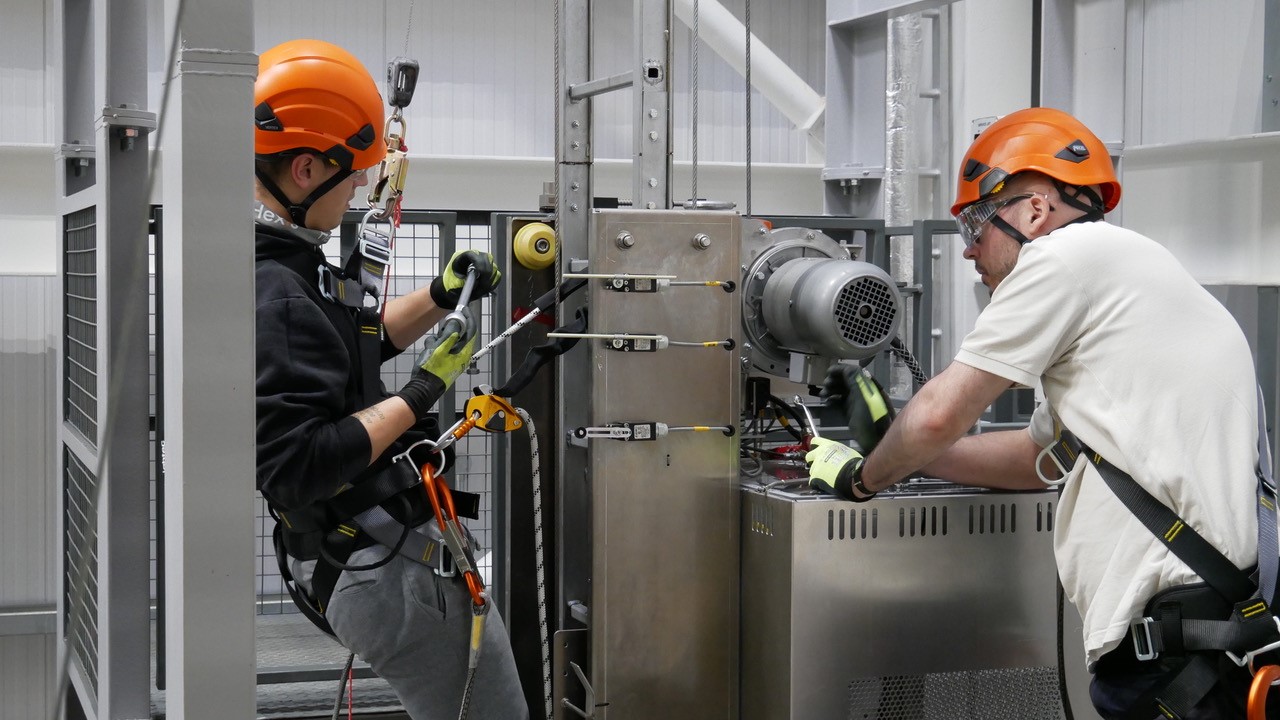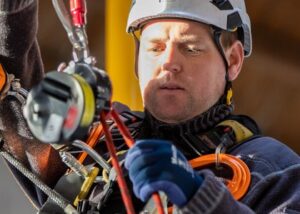8 reasons why you should be tailoring your training to your company's specific needs.
In industries like wind energy, where technicians work in high-risk environments with complex machinery and electrical systems, effective training is critical. Standardized training programs provide foundational knowledge, but they often fall short of addressing the specific needs of individual companies. Custom-tailored training courses that align with a company’s unique processes and procedures are far more effective in ensuring safety, especially in areas like electrical safety. These bespoke programs enhance worker competency, reduce risks, and foster a culture of safety by addressing the exact challenges faced in real-world operations.
This article explores in depth the importance of aligning training with company-specific protocols, with a focus on the benefits for both general and electrical safety.
1. Addressing Specific Equipment and Systems
One of the primary reasons for tailoring training programs is the diversity of equipment, tools, and technologies used across different companies. In the wind energy sector, turbines can vary significantly in design, size, and manufacturer. Electrical systems, too, differ in terms of voltage levels, circuit layouts, and control mechanisms.
Generic training may not prepare technicians to handle the specific nuances of a company’s equipment. Tailored training, on the other hand, focuses on these unique aspects, providing workers with:
- Hands-on experience with the actual equipment they’ll use.
- Knowledge of specific maintenance and troubleshooting procedures.
- Awareness of site-specific hazards associated with the machinery.
For instance, a technician trained generically might not know the exact sequence required to safely power down a specific turbine. This gap can lead to mistakes, delays, or accidents. Tailored training eliminates this risk by ensuring workers understand the specific systems they’ll encounter daily.
2. Compliance with Company and Regulatory Standards
Safety standards vary not only across industries but also between companies. Organizations often develop their own safety protocols to comply with local, state, or federal regulations, as well as industry standards. These protocols can include:
- Site-specific safety measures.
- Unique workflows for maintenance and repair.
- Emergency response plans designed for the facility layout.
Bespoke training ensures workers are educated in these specific protocols, which is critical for:
- Regulatory compliance: Adhering to OSHA standards and other regulatory requirements can save companies from fines and legal issues.
- Internal consistency: Workers trained on company-specific procedures are less likely to deviate from established safety protocols.
- Building a culture of safety: Training tailored to a company’s standards reinforces the importance of following those standards, fostering a safer work environment.
3. Enhanced Electrical Safety
Electrical safety is one of the most critical areas in wind energy, given the high voltages and complex configurations of electrical systems in turbines. Standard training often provides a broad overview of electrical hazards and basic safety protocols, such as lockout/tagout (LOTO). However, it may not delve into the specific practices needed for a company’s unique systems.
Tailored training ensures that workers are well-versed in:
- System-specific isolation procedures: Workers learn the exact steps to safely de-energize equipment, minimizing the risk of accidental electrocution.
- Emergency response for electrical incidents: Customized training includes the correct response protocols for electrical faults specific to the company’s systems.
- Maintenance of specific components: From transformers to switchgear, workers are trained to handle company-specific equipment safely and efficiently.
This specialized knowledge significantly reduces the likelihood of electrical accidents, which can have severe consequences for both worker safety and operational continuity.
4. Mitigating Risk by Addressing Site-Specific Hazards
Every worksite has unique hazards, and failing to address them in training can lead to accidents or injuries. Tailored training allows companies to incorporate specific risk factors into their programs, such as:
- Environmental conditions: Wind farms are often located in remote areas with extreme weather conditions that can impact safety procedures.
- Site layouts: Knowing the location of emergency exits, equipment, and first aid stations is crucial in case of an accident.
- Specialized tasks: Certain maintenance tasks, such as blade repairs or tower climbing, carry specific risks that generic training may not fully address.
By tailoring training to address these site-specific hazards, companies can create a safer work environment and ensure workers are better prepared for the challenges they’ll face.
5. Boosting Worker Confidence and Competence
When training is directly aligned with a company’s processes and procedures, workers gain a deeper understanding of their roles and responsibilities. This leads to increased confidence and competence on the job, which has several benefits:
- Fewer errors: Workers who are confident in their knowledge are less likely to make mistakes.
- Faster problem-solving: Technicians trained on specific systems can quickly identify and address issues.
- Improved morale: Feeling well-prepared for the job enhances job satisfaction and reduces stress.
For example, a technician who knows the exact protocol for isolating an electrical fault will act decisively and safely, minimizing downtime and risk.
6. Improving Communication and Teamwork
Tailored training ensures that all workers are operating from the same playbook. This consistency is essential for effective communication and collaboration, especially during high-pressure situations. Examples include:
- Maintenance operations: When every team member knows the specific procedures for a task, it reduces confusion and ensures work is completed safely and efficiently.
- Emergency responses: Clear communication is critical during emergencies, and tailored training ensures everyone knows their role and the proper procedures.
- Multi-disciplinary teams: In wind energy, teams often include technicians, engineers, and site managers. Custom training ensures all roles are aligned with company standards, improving collaboration.
7. Supporting Long-Term Operational Efficiency
Safety and efficiency are closely linked. When workers are trained to follow company-specific procedures, the chances of accidents, equipment damage, and downtime decrease significantly. Tailored training supports long-term operational efficiency by:
- Reducing costly mistakes: Workers are less likely to damage equipment or make errors that lead to downtime.
- Enhancing productivity: Technicians who are confident in their training can complete tasks more quickly and accurately.
- Minimizing retraining costs: Targeted training reduces the need for additional instruction to address gaps in knowledge.
8. Adapting to Industry Evolution
The wind energy industry is constantly evolving, with new technologies, equipment, and safety standards emerging regularly. Tailored training allows companies to stay ahead of these changes by:
- Updating training materials to reflect the latest innovations.
- Ensuring workers are prepared for new challenges.
- Aligning training with industry best practices.
By investing in tailored programs, companies position themselves as leaders in adopting and implementing cutting-edge practices.
Conclusion
Tailoring training courses to a company’s processes and procedures is not just a best practice; it’s a necessity in high-risk industries like wind energy. Customized programs ensure workers are well-prepared to handle specific equipment, follow company protocols, and address site-specific hazards. This approach enhances both general safety and electrical safety, reduces the risk of accidents, and fosters a culture of excellence.
For companies committed to maintaining high safety standards and operational efficiency, investing in tailored training is an investment in their workforce—and in the future success of their operations.
Interested tailored training solutions?
Click the button to learn more




